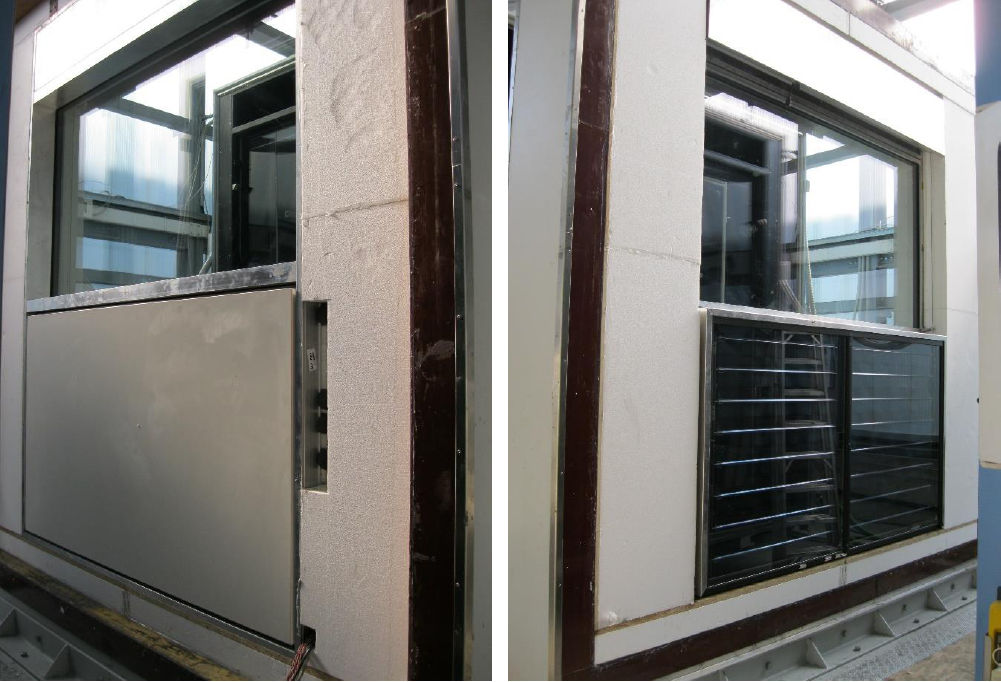Brief Concept Description
The SunRise facade is an innovative multifunctional metal and glass curtain wall façade module developed for the tertiary building sector. It integrates a solar-thermal system composed of a thermal collector, a small-size water storage and a radiant panel. Moreover, an “hydraulic unit” integrated in the parapet hosts the required hydronic components (pump, valves etc.), a dedicated control box and sensors integrated for metering purposes. The system can harvest solar radiation to cover space heating and hot water preparation loads but can also be used as terminal for the distribution of space heating and cooling energy with the use of the radiant panel. The hydronic circuit of the SunRise façade is connected with the building’s central heating/cooling loop.
Architectural and Technological Integration into the Envelope
Solar thermal collector, thermal storage and radiant panel are installed in the lower opaque section of the façade module, as shown in Figure 28. All the hydronic components in the parapet are hosted in a metal shell designed to guarantee airtightness and a robust structure to support the solar collector. Thanks to the modular structure of the solution, the hydraulic unit in one façade module can be shared with multiple inter-connected façade modules. Maintenance of solar active façades is an issue, especially in the case of high-rise buildings. In this solution, the radiant panel is removable to access the integrated components, minimizing the effort in case of failures. Concerning aesthetics, the radiant panel gives a pleasant homogeneous appearance from inside, whereas the presence of the solar-thermal collector defines the exterior visual appearance of the façade modules.

Figure 28. Internal (left) and external (right) views of the SunRise façade module installed in a test chamber at Eurac Research.
Integration into the Building: System and Comfort
The SunRise façade integrates all safety and operational components required to work autonomously, such as safety valves, expansion vessel, deaerator, solar pump etc. The SunRise façade is coupled with the building’s central energy generation and distribution system with a 2-pipe or 4-pipe connection, to cover all thermal loads including DHW preparation and space cooling delivery. The radiant panel integrated in the façade can deliver heating/cooling, but very deep rooms and the core of the building might require additional emission terminals for a proper climatization. In order to maximize exploiting solar irradiation and improve the local thermal comfort, the management of the heat fluxes from the collector to the integrated thermal storage and to the building’s central system is key: an on-board control and monitoring unit manages the system.
Further Reading
D’Antoni M., Bonato P., Fedrizzi R. “On the development of a façade-integrated solar water storage”. Journal of Façade Design and Engineering, Vol. 6 Nr. 2, pp. 9-20, April 2018. DOI: https://doi.org/10.7480/jfde.2018.2.2048.